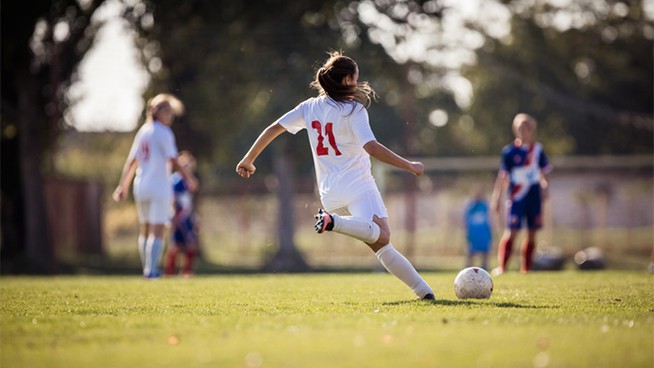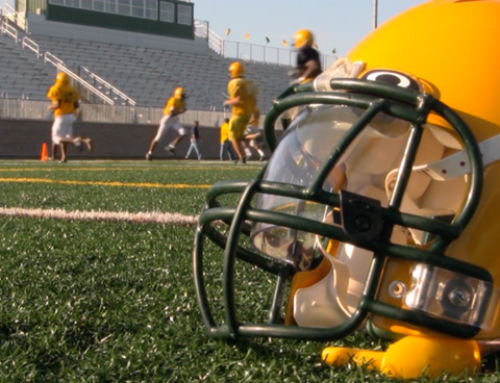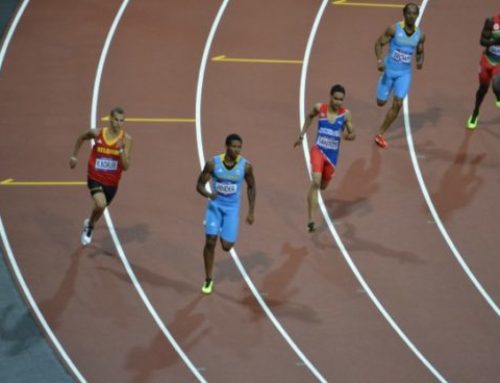Jump Training: How to Become Explosive
Being explosive can mean the difference between running faster and jumping higher than an opponent. One of the best methods for developing explosive power is plyometric training, which works to increase power [speed of strength] in the hips, glutes, quads and hamstrings—critical for all athletes.
I recommend performing the Depth Jump to Box Jump to develop the muscles’ ability to lengthen under control and to quickly and powerfully contract when landing, then immediately jumping. As you land, your tendons, ligaments and muscle fibers must gather energy and generate enough force to quickly jump again. This is how athletes transition from one movement to another in a variety of other skills, like changing direction. Once you develop explosive power with the Depth Jump to Box Jump, you will be able to quickly explode on your first step and propel yourself to overall faster speeds.
To perform the exercise correctly, make sure your Depth Jump box is no higher than 12 inches. Select a different box for the Box Jump, approximately 18 inches high, depending on your ability. Set the two in a parallel line.
Start on top of the Depth Box. Step off the box. Bring your arms back in a jumping position. Once you land, immediately prepare to jump onto the higher box by bending your knees in an athletic stance. Follow with a jump, driving your arms back and then forward and exploding upward by forcefully contracting your hips and glutes. Land softly with your feet shoulder-width apart and in an athletic stance.
I recommend supersetting three sets of five Depth Jump to Box Jumps, immediately followed by 20 Sit and Twists [a.k.a. Russian Twists], with a maximum of 10 to 15 seconds of rest between sets. At my facility, we mix in a core movement with our plyometric training, so each rest period is active.
Brad Leshinske is the founder and owner of Athletic Edge Sports Performance [Evergreen Park, Ill.]. He has trained athletes for more than seven years. He also serves as an adjunct professor of sports performance in the Exercise Science Department of North Park University in Chicago. Leshinske also writes for baseballstrengthcoach.com.
RECOMMENDED FOR YOU
MOST POPULAR
Jump Training: How to Become Explosive
Being explosive can mean the difference between running faster and jumping higher than an opponent. One of the best methods for developing explosive power is plyometric training, which works to increase power [speed of strength] in the hips, glutes, quads and hamstrings—critical for all athletes.
I recommend performing the Depth Jump to Box Jump to develop the muscles’ ability to lengthen under control and to quickly and powerfully contract when landing, then immediately jumping. As you land, your tendons, ligaments and muscle fibers must gather energy and generate enough force to quickly jump again. This is how athletes transition from one movement to another in a variety of other skills, like changing direction. Once you develop explosive power with the Depth Jump to Box Jump, you will be able to quickly explode on your first step and propel yourself to overall faster speeds.
To perform the exercise correctly, make sure your Depth Jump box is no higher than 12 inches. Select a different box for the Box Jump, approximately 18 inches high, depending on your ability. Set the two in a parallel line.
Start on top of the Depth Box. Step off the box. Bring your arms back in a jumping position. Once you land, immediately prepare to jump onto the higher box by bending your knees in an athletic stance. Follow with a jump, driving your arms back and then forward and exploding upward by forcefully contracting your hips and glutes. Land softly with your feet shoulder-width apart and in an athletic stance.
I recommend supersetting three sets of five Depth Jump to Box Jumps, immediately followed by 20 Sit and Twists [a.k.a. Russian Twists], with a maximum of 10 to 15 seconds of rest between sets. At my facility, we mix in a core movement with our plyometric training, so each rest period is active.
Brad Leshinske is the founder and owner of Athletic Edge Sports Performance [Evergreen Park, Ill.]. He has trained athletes for more than seven years. He also serves as an adjunct professor of sports performance in the Exercise Science Department of North Park University in Chicago. Leshinske also writes for baseballstrengthcoach.com.










